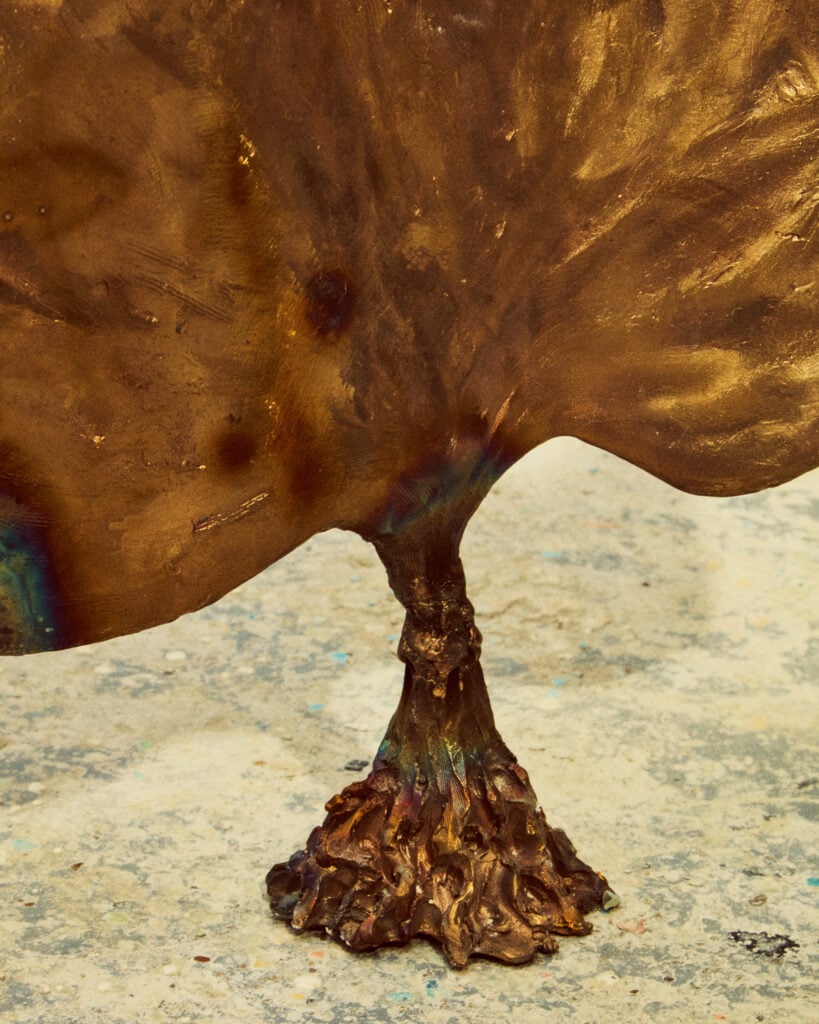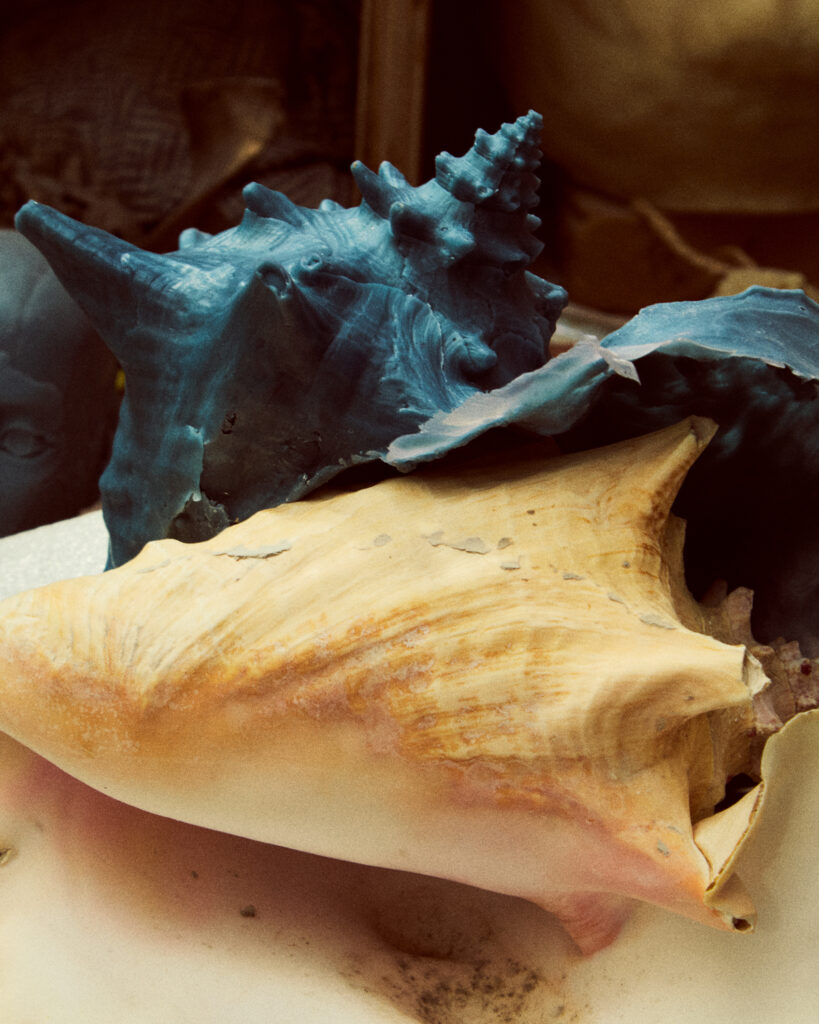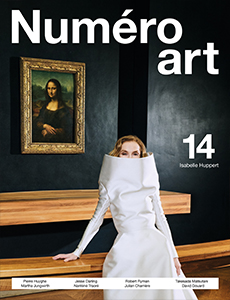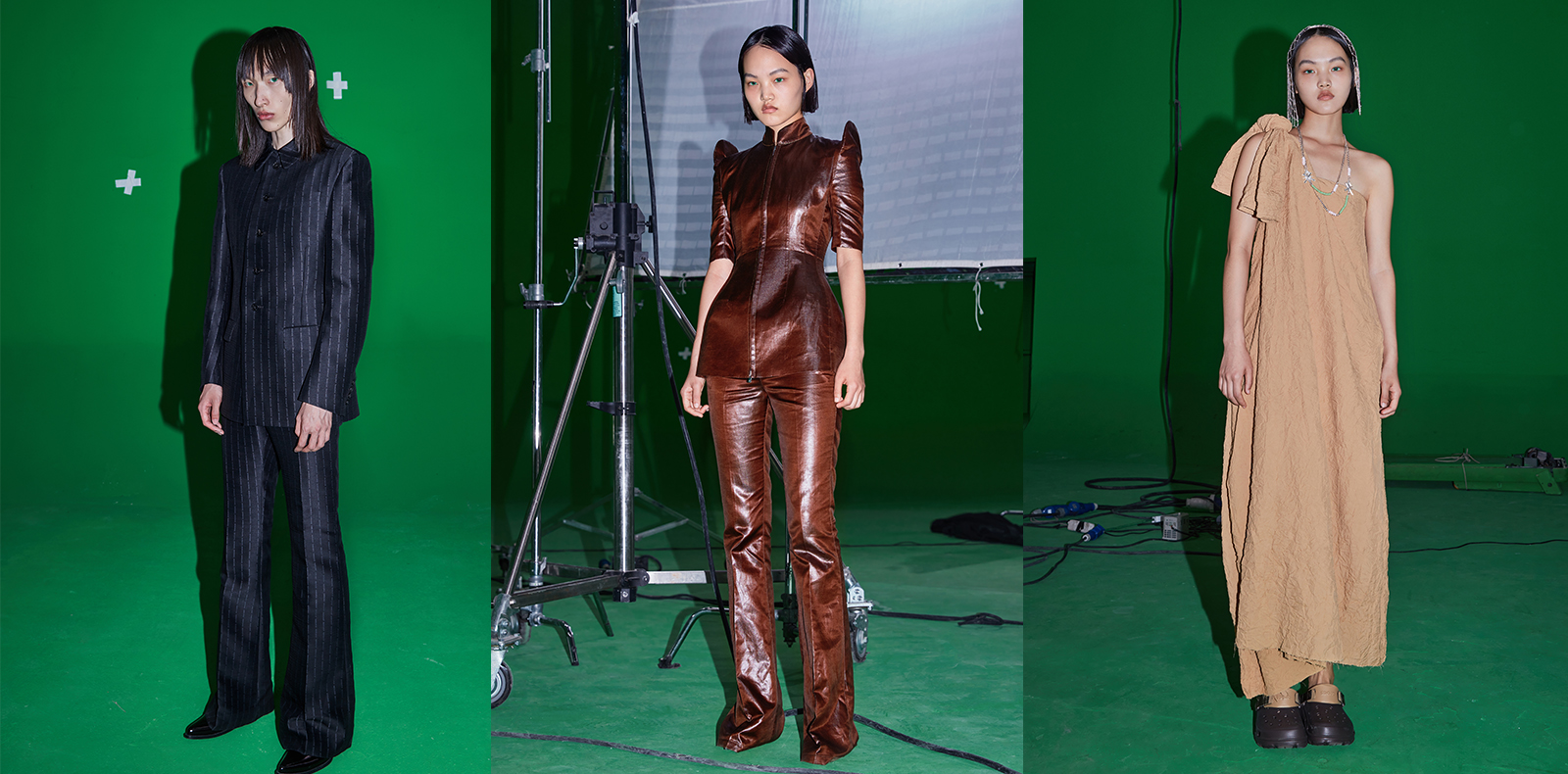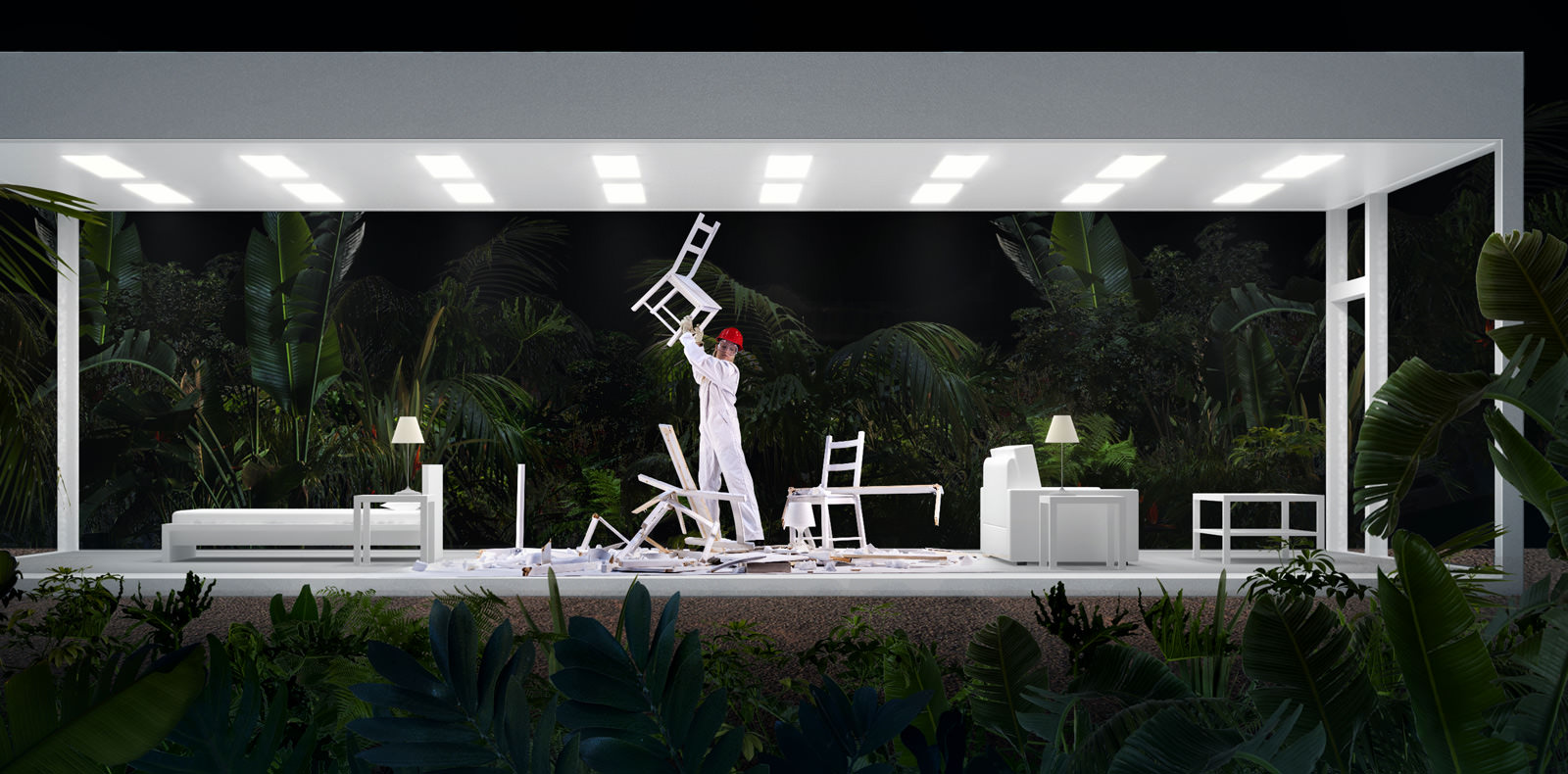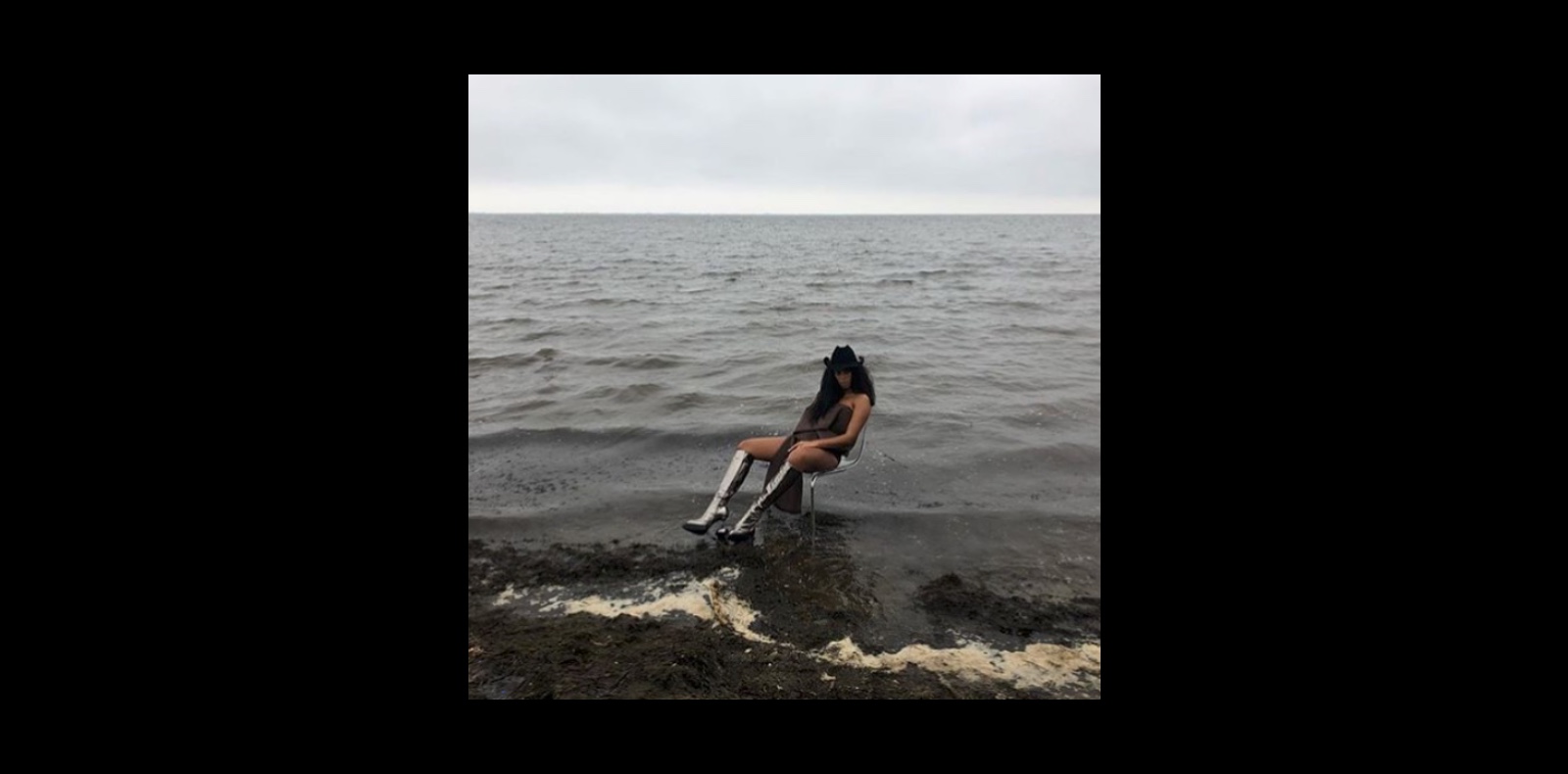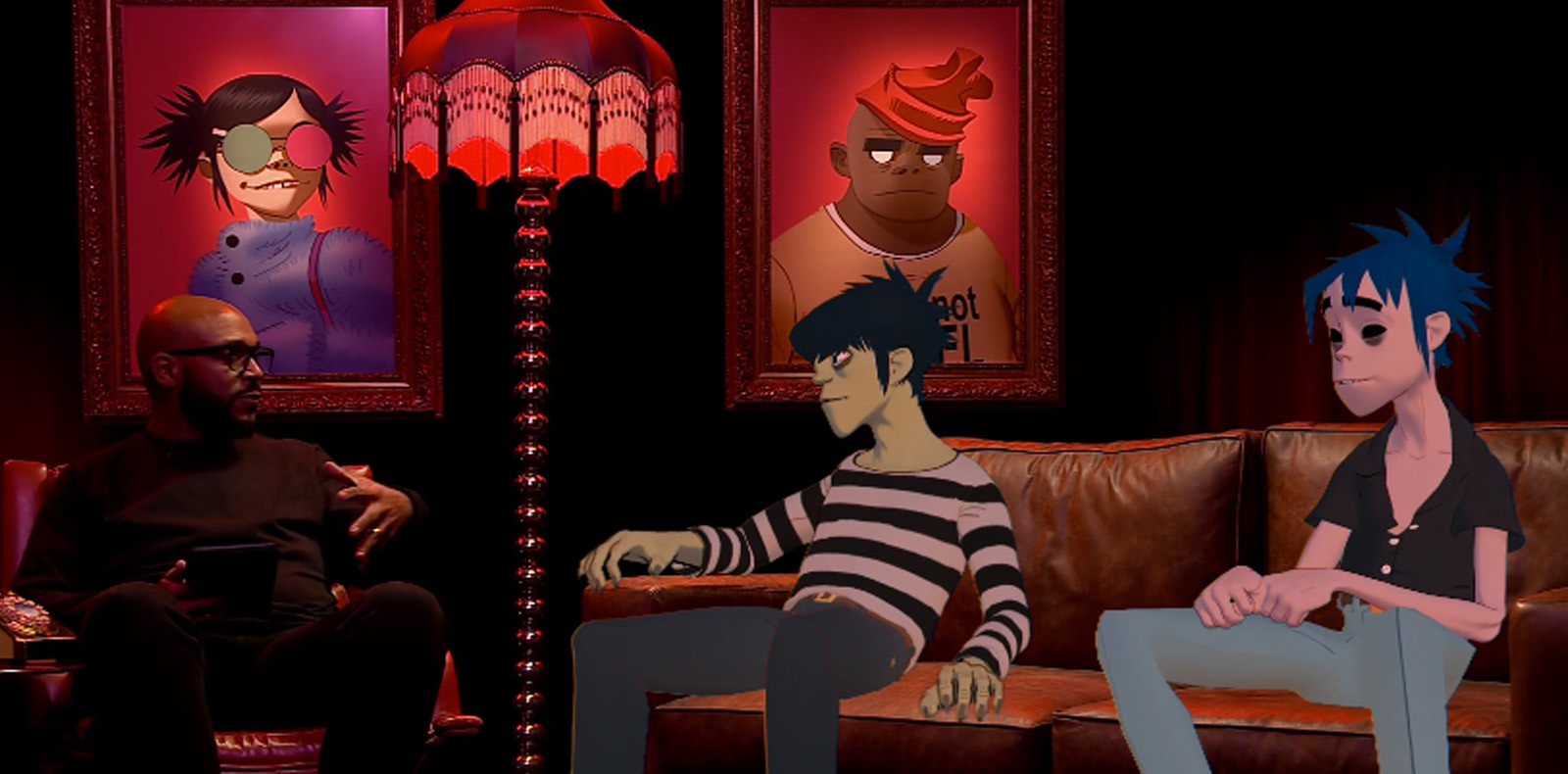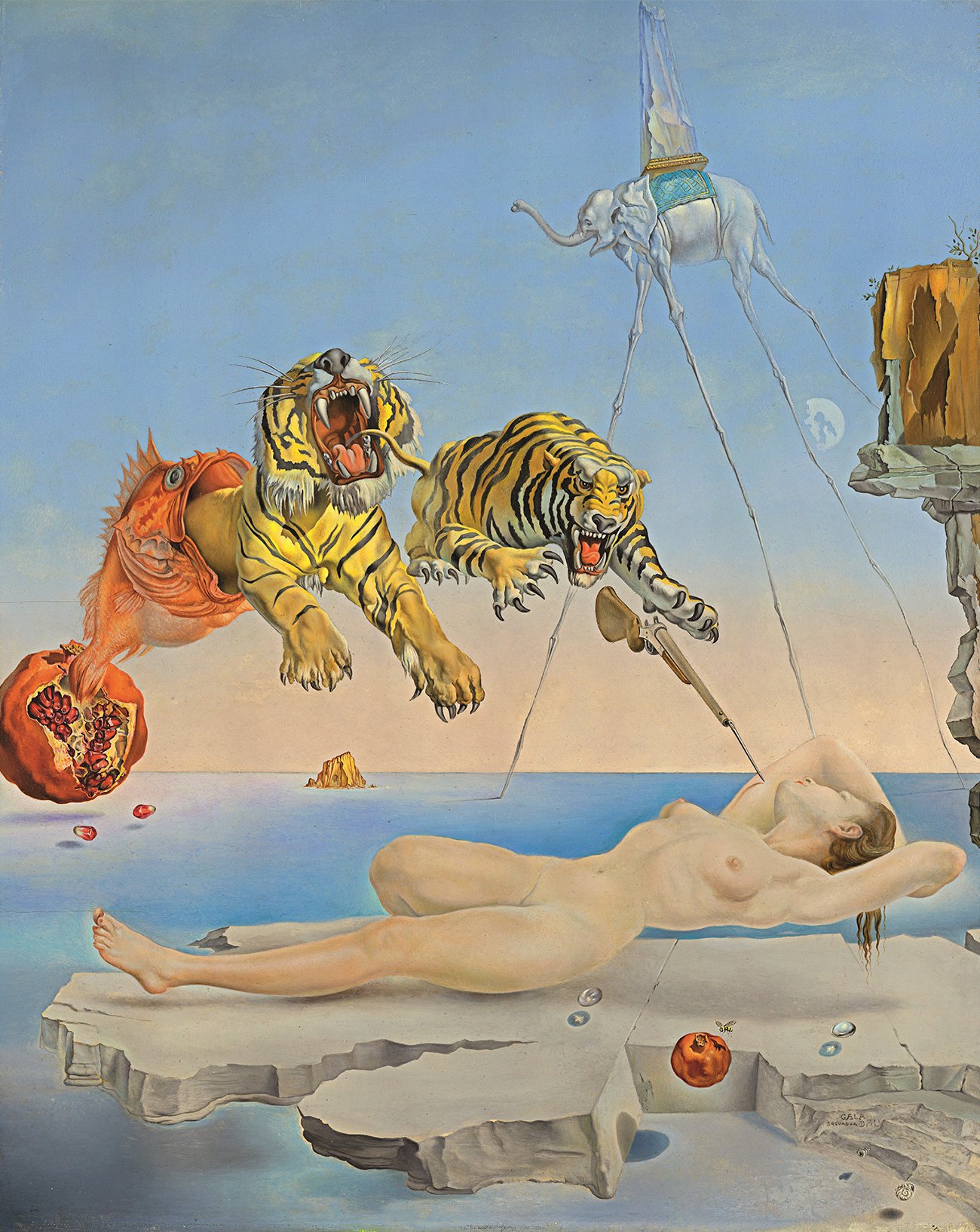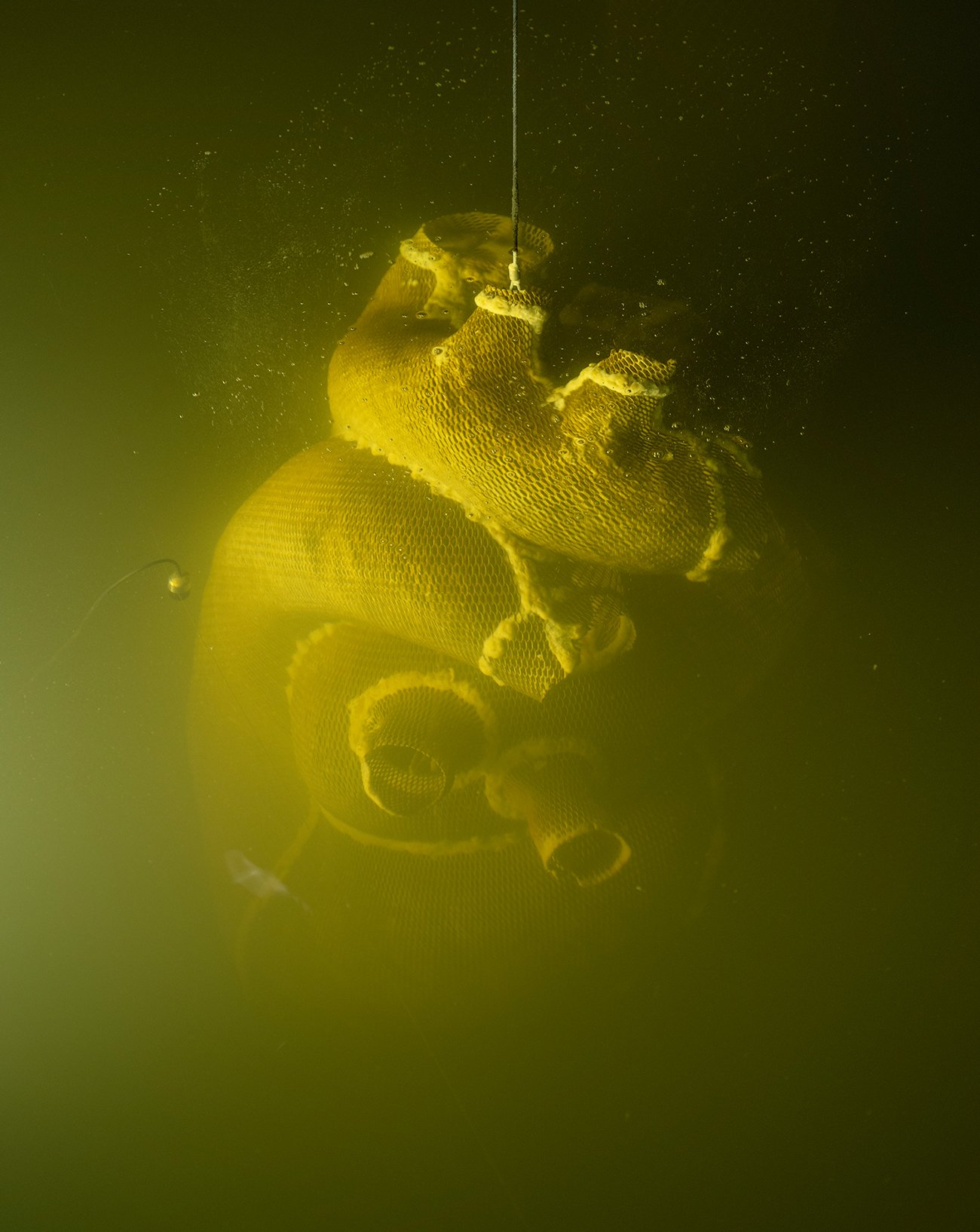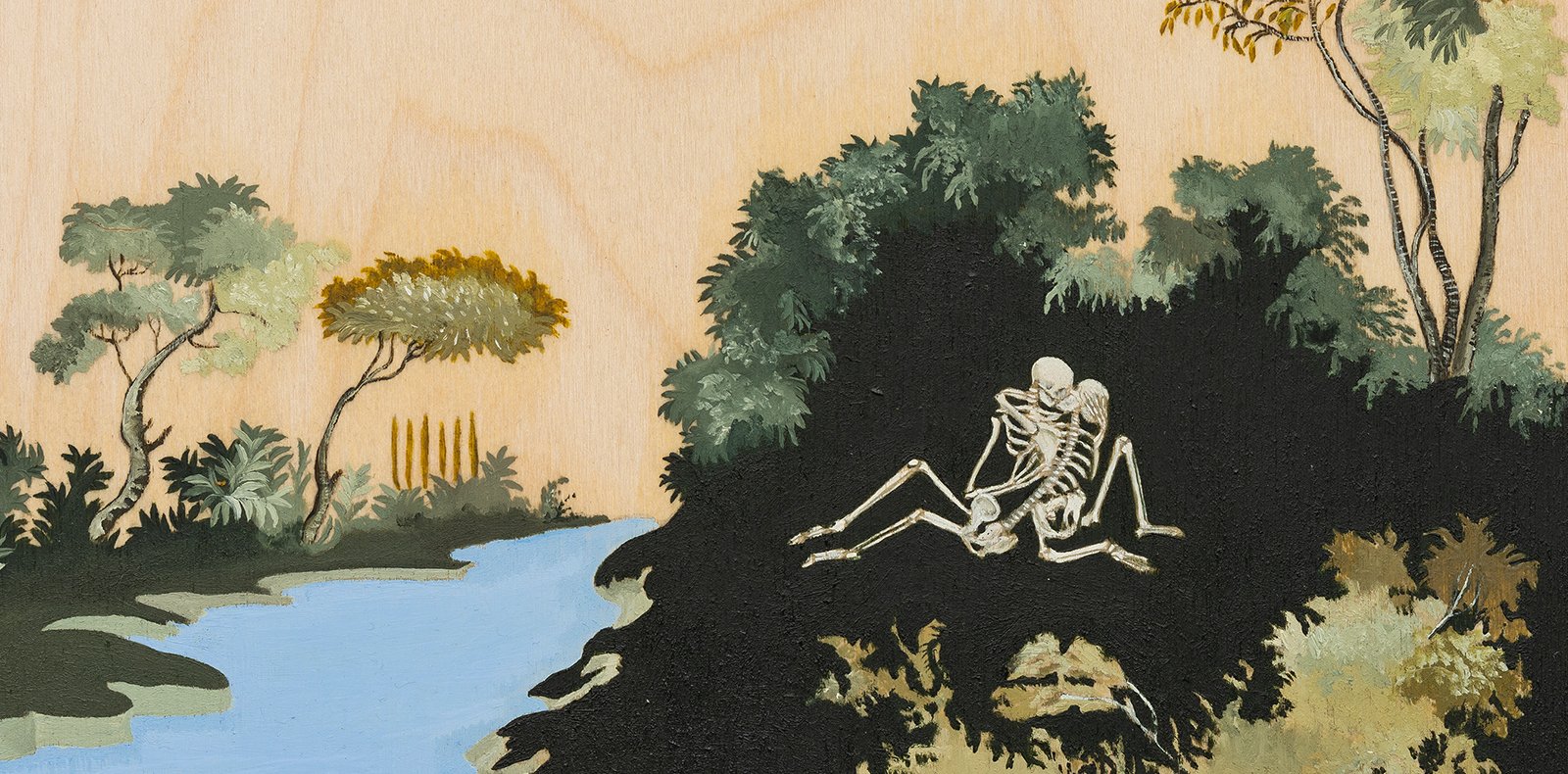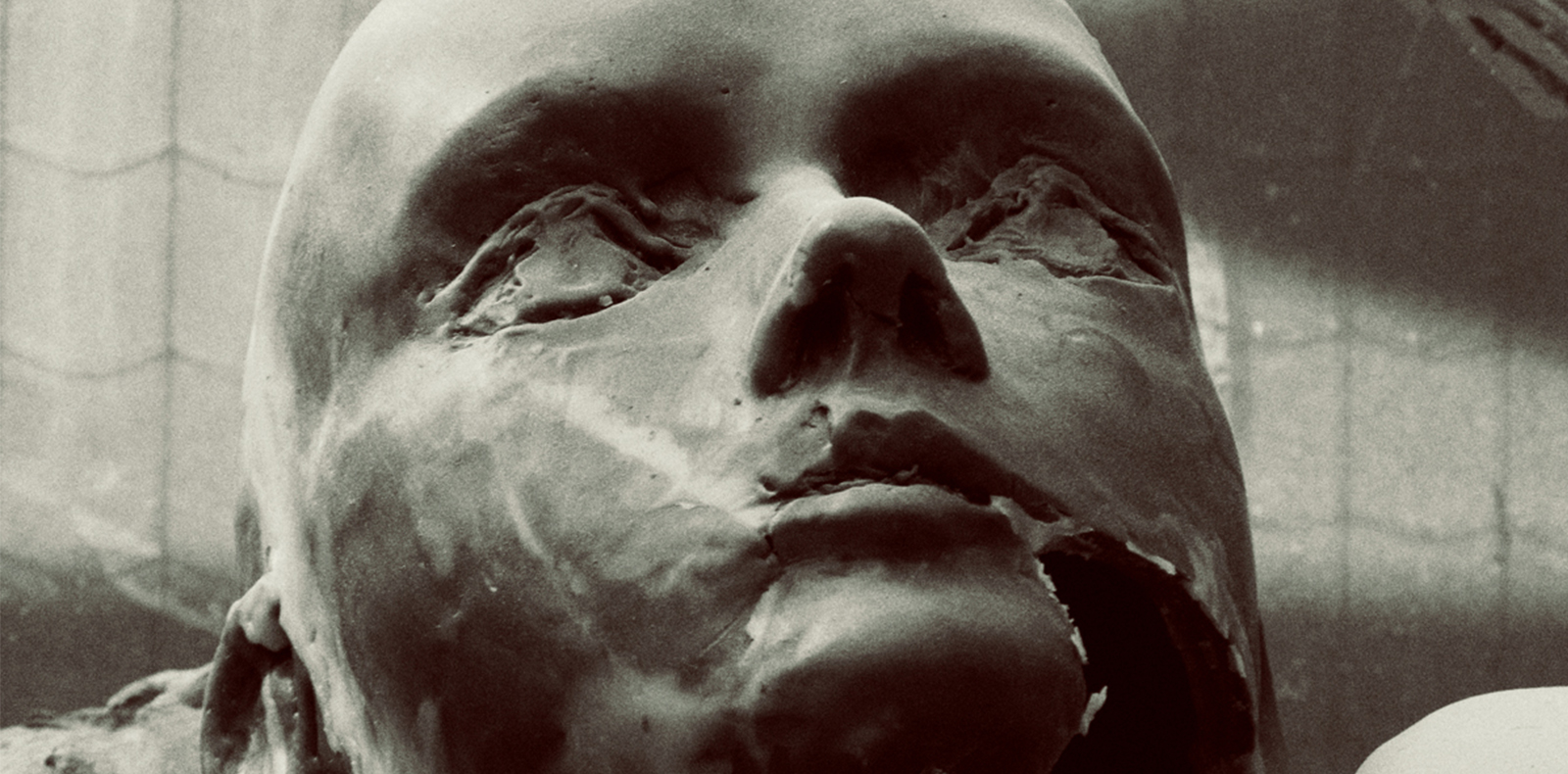
21
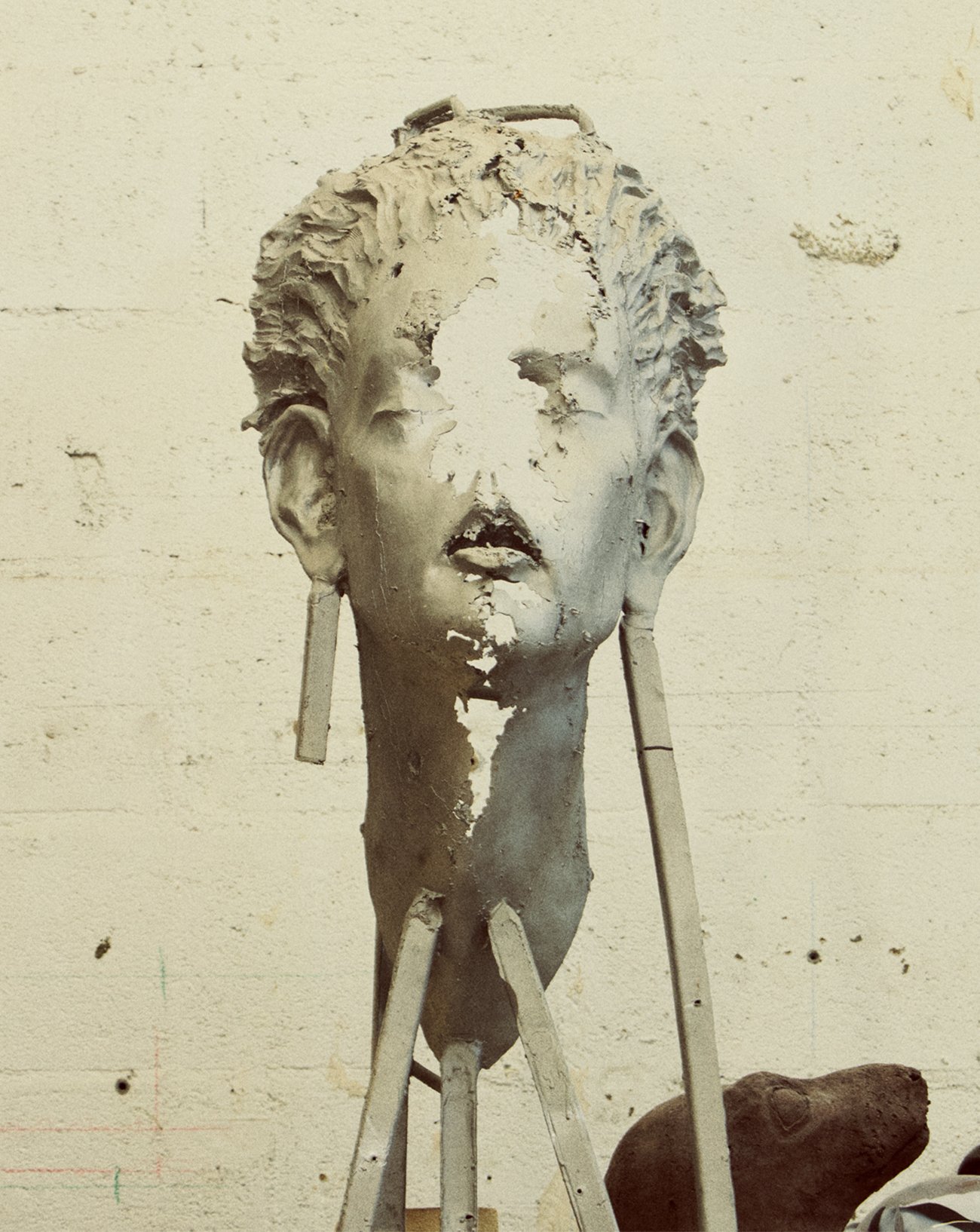
21
In the studio of Jean-Marie Appriou, sculptor of a world in fusion
Now an established figure on the French scene, the sculptor Jean-Marie Appriou invites us into a dreamlike world, filled with people and creatures from myth and legend. On the occasion of his exhibition at the Galerie Perrotin, and ahead of his June 2025 solo show at Montpellier’s MO.CO. Panacée, Numéro art took an exclusive tour around the mysteries of his studio.
Interview by Jean de Loisy Jean de Loisy.
Photos by Florent Tanet Florent Tanet.
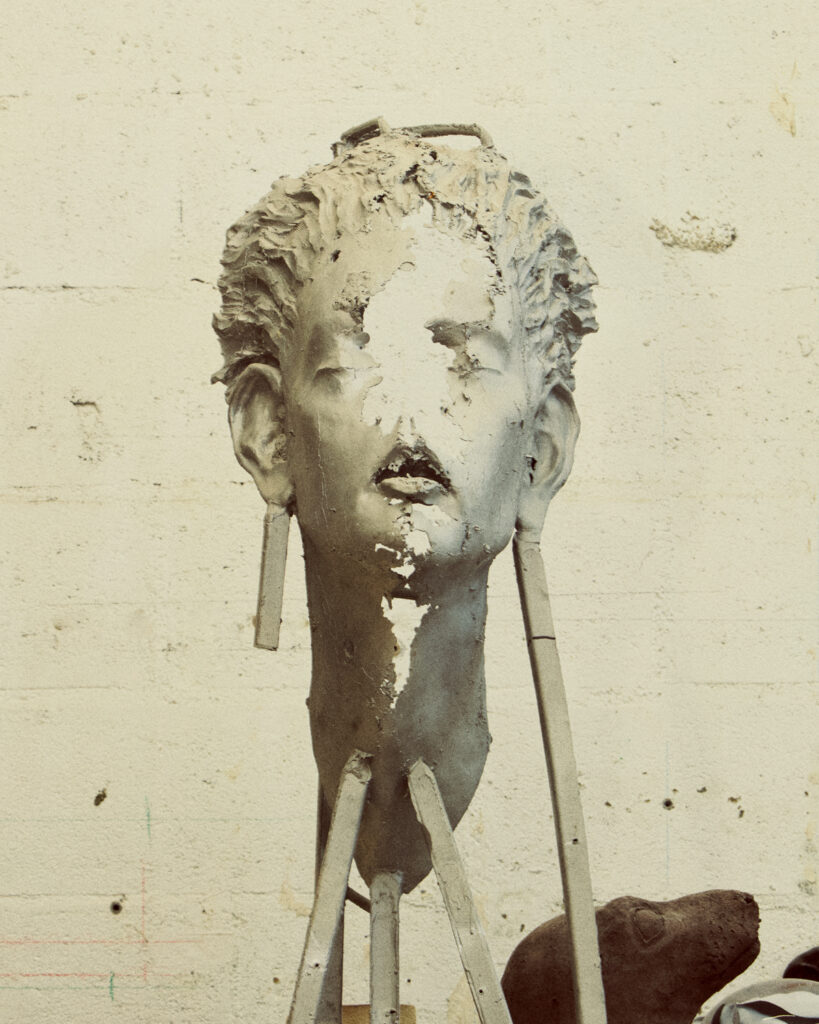
Interview with Jean-Marie Appriou, sculptor of a world in fusion
Jean de Loisy: Jean-Marie Appriou’s sculptures appear like fragments of myths or fables whose ending has been lost, but they give just enough information for the mind to dream up the rest of the story. He needed to find a stopping point, a break in the narrative that would allow the imagination to take over without being overwhelmed by detail. His work is like a rock that’s gradually unveiled by the retreating tide as a child expectantly awaits its full revelation.
Jean-Marie Appriou: Sculpture is when the tide retreats, and little by little forms emerge. Michelangelo used to say that matter must retreat, and that when he worked in marble, he made the stone recede, and little by little an elbow or other parts of the body appeared. Therefore, the more I work, the more matter I take away, and the more I feel the sculpture emerging, like when rocks reveal themselves at low tide.
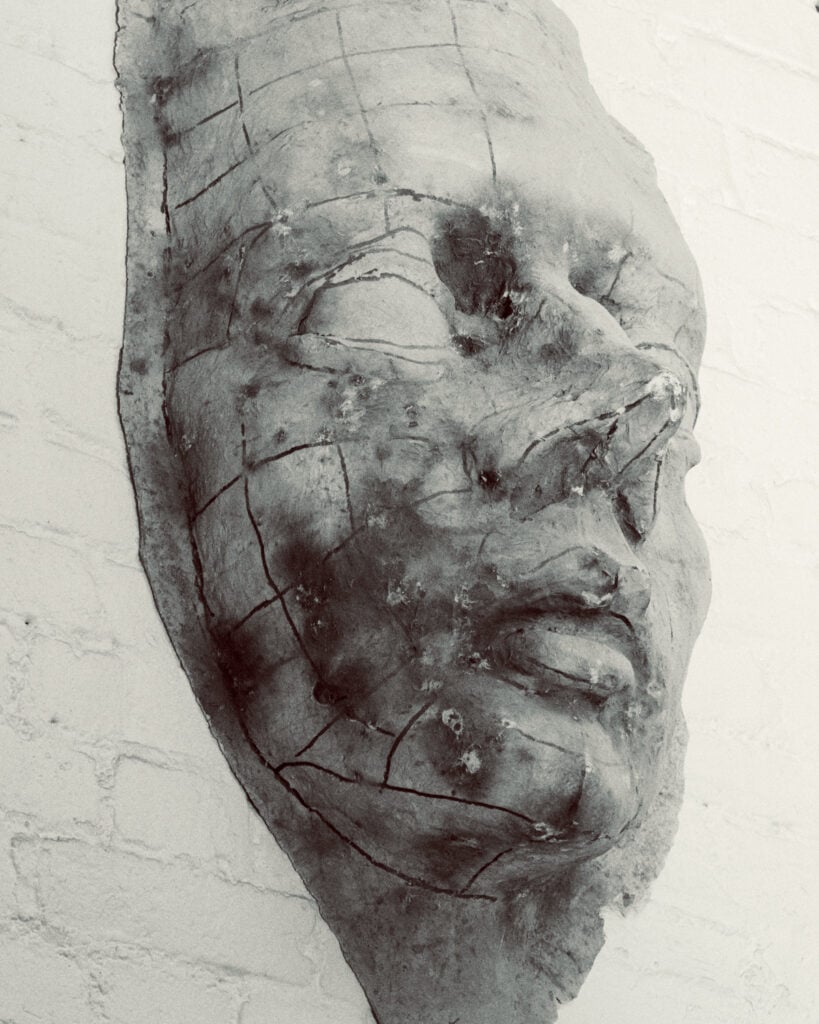
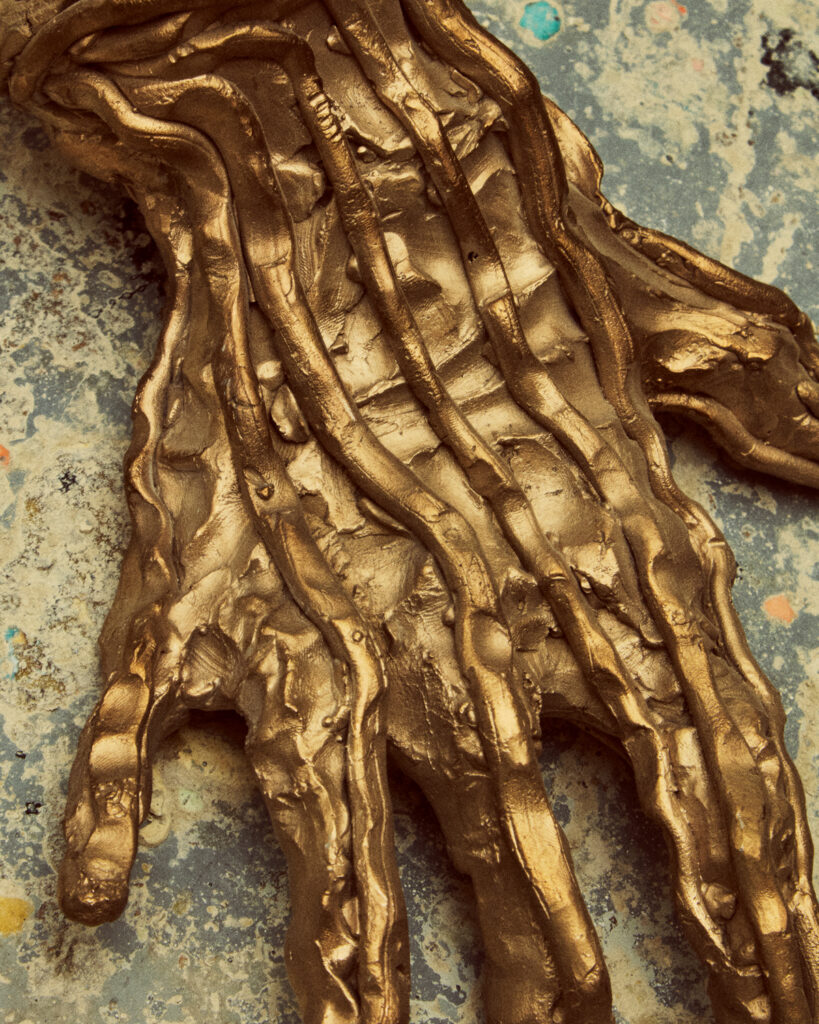
JdL: If the matter which makes up the work is a piece of the world, the processes to which it is subjected in order to become a sculpture in ceramic, glass, cast iron, or bronze make it much more than just a material. Rather, it is a gateway to a wider understanding of the cosmos, which fascinates Appriou. Fire, casting, dissolution, ashes, the kiln – all these primordial moments bring together technique, symbolism, and myth, and this conjunction profoundly impacts his work. In the scarlet or pale glazes of his ceramics, in the opaque depths of butterflies’ wings, in the pitted surface of aluminium, Appriou’s pieces bear within them the traces of a fight, of a violent modification, of matter wrestled from a former condition into something else, loading the sculpture with a past from which it must smash its way out. In this way, the oh-so- contemporary works he manages to create are far older than their manufacture date.
J-MA: I try to go beyond the appearance of things, it’s an impulse that allows me to dream. I’m no scientist, my understanding is more poetic, but, for example, in the studio we listen to Dernières nouvelles des étoiles, a radio programme about the latest discoveries in outer space, and while we’re busy making our sculptures, we start dreaming about robots on Mars that basically, like us, are searching for minerals. And it seems to me that in a sculptor’s everyday activities there’s always something extraordinary, something cosmic. Take water, which I often represent, which can evoke the primordial soup or the black-smoking hydrothermal vents from which life is supposed to have been born. My sculptures are the outcome of the mysterious exchange between minerals, gas, and water that takes place in the kiln – the transformation of silica into glass, metal that liquefies under great heat, and the gas which is energy. The kiln, the crucible, is the sun at the centre of our studio. You can’t remain insensible to that extraordinary moment when you open the kiln door, to that violent blast of heat that links you to prehistory, to our Neolithic ancestors. There’s a humility in pottery that’s not the same as in the foundry, which is more industrial. The foundry links you to the ancient Greeks, to the Bronze Age and the Iron Age. You understand things, the weight of bronze, the agility of iron, the dramas of the 20th century, and the effect of industrialization on warfare.
“Sculpture is when the sea goes down, and little by little you see shapes that emerge.“
Jean-Marie Appriou
At one point, with my father, who liked to make pottery, we decided to restart the kiln, sometime around 2012. It was a sort of laboratory where I tried out experiments. I cast and moulded a lof of things there – seaweed, flowers, ingots, and taps. I wanted to transform them into a liquid, then give that liquid a form thanks to a mould. This was an essential step in the internalization of the possibilities offered by matter – to become autonomous, I had to understand what the transition from raw to cooked, from solid to liquid, or from empty to full really meant. This was important for me, but I’m less attached to all that now – I feel free to go see a founder, to show him what I’m doing, and not to be in a position of authority but rather in one of mutual understanding. I’ve gained this liberty of wanting, for instance, to make a 5 m-high horse in five weeks and knowing that it’s both possible and feasible. But let’s get back to the essential, which is to say the materiality of the world, which fascinates me because it teaches me physics, geophysics, and metaphysics. The fact that the Earth’s core is made of iron, that we’re living on top of a big molten iron ball of which granite is only the crust, overawes me. And when I cast iron, and I think that actually it’s the same thing, I just can’t get over it.

“My sculptures are the result of the combination of mineral, gas and water, and their mysterious exchanges that occur in the kiln.“
Jean-Marie Appriou
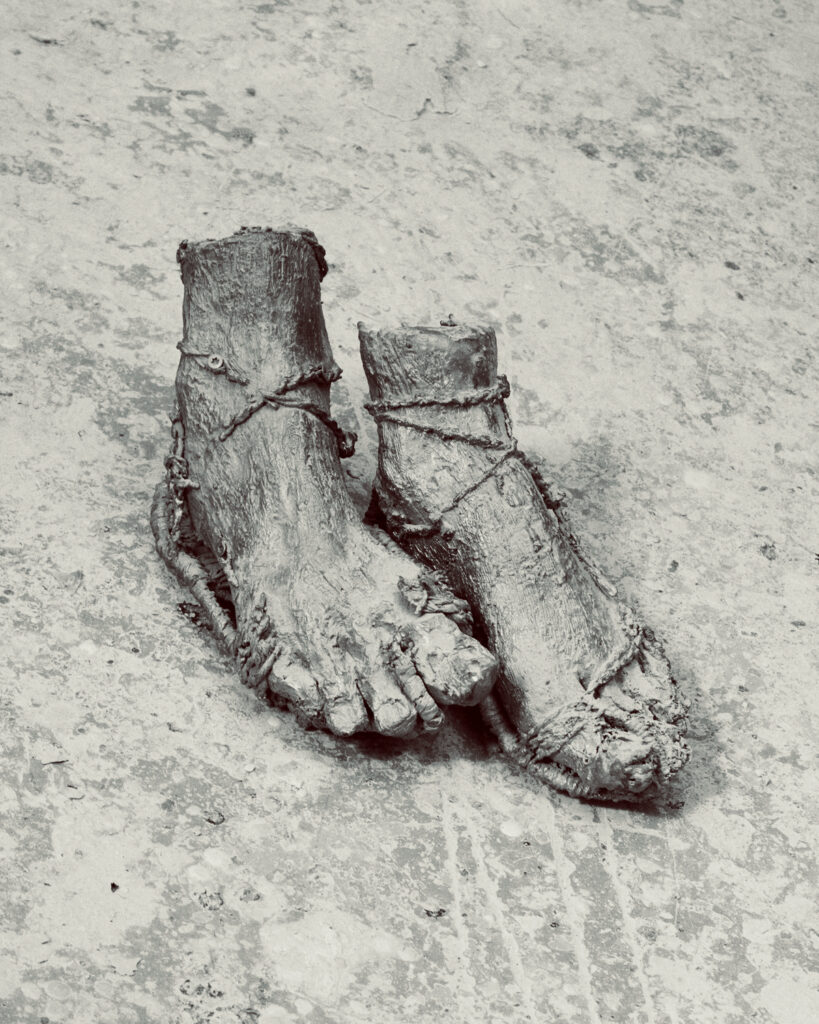
J-MA: At one point, with my father, who liked to make pottery, we decided to restart the kiln, sometime around 2012. It was a sort of laboratory where I tried out experiments. I cast and moulded a lof of things there – seaweed, flowers, ingots, and taps. I wanted to transform them into a liquid, then give that liquid a form thanks to a mould. This was an essential step in the internalization of the possibilities offered by matter – to become autonomous, I had to understand what the transition from raw to cooked, from solid to liquid, or from empty to full really meant.
“The fact that we are on a big ball of molten iron of which granite is only the mantle impresses me.“
Jean-Marie Appriou
This was important for me, but I’m less attached to all that now – I feel free to go see a founder, to show him what I’m doing, and not to be in a position of authority but rather in one of mutual understanding. I’ve gained this liberty of wanting, for instance, to make a 5 m-high horse in five weeks and knowing that it’s both possible and feasible. But let’s get back to the essential, which is to say the materiality of the world, which fascinates me because it teaches me physics, geophysics, and metaphysics. The fact that the Earth’s core is made of iron, that we’re living on top of a big molten iron ball of which granite is only the crust, overawes me. And when I cast iron, and I think that actually it’s the same thing, I just can’t get over it.
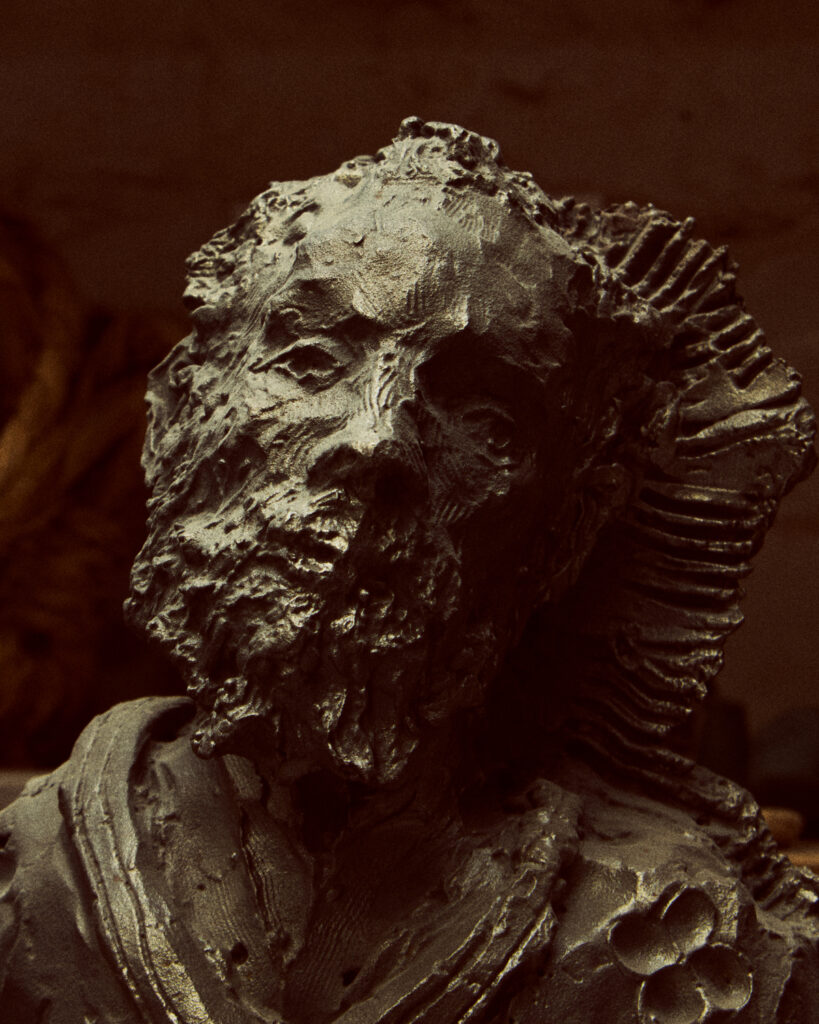

“My sculptures are like snapshots taken on a stage, an interrupted story of which we perceive a sparkle.“
Jean-Marie Appriou

JdL: The figures in Appriou’s works rarely construct a story, but instead express its possibility. Figures, plants, dragons, and insects offer themselves up for interpretation, but the narrative remains in the hands of the beholder. It is a particularity of Appriou’s, in his figurative sculpture, to create pensive figures, which are symbolic, for sure, but whose personalities remain available, open to hypotheses.
J-MA : My sculptures are like snapshots taken on a stage, an interrupted story of which we perceive only a fragment. As a child, I was very receptive to theatre. My father made stage sets, and I liked to play in them and dress up in costumes. Like everyone, I enjoy stories, and I used to look at the stained glass in churches in Brittany the way one would read a story board or a comic, which almost led me to a career in animated movies. But the first time I had the sensation of encountering what it is that makes a work of art, something magic happened. It was thanks to the calvaries and their complexity with respect to narration, figuration, and scale. That never left me, and it’s still very present both within me and in my work today. When I see visitors encountering my own characters,
I expect them to tell a story, to imagine a scenario for the beekeeper, the astronaut, and the bathing woman. These figures embody psychic situations: I gave them a role and an appearance as in a stage play… The child astronaut is an explorer of difficult regions – I imagine him astonished and curious, no doubt worried about an uncertain future.
Jean-Marie Appriou is represented by the Perrotin gallery. Jean-Marie Appriou will be on the bill for a solo exhibition from June to September 2025 at the MO.CO. Montpellier.
